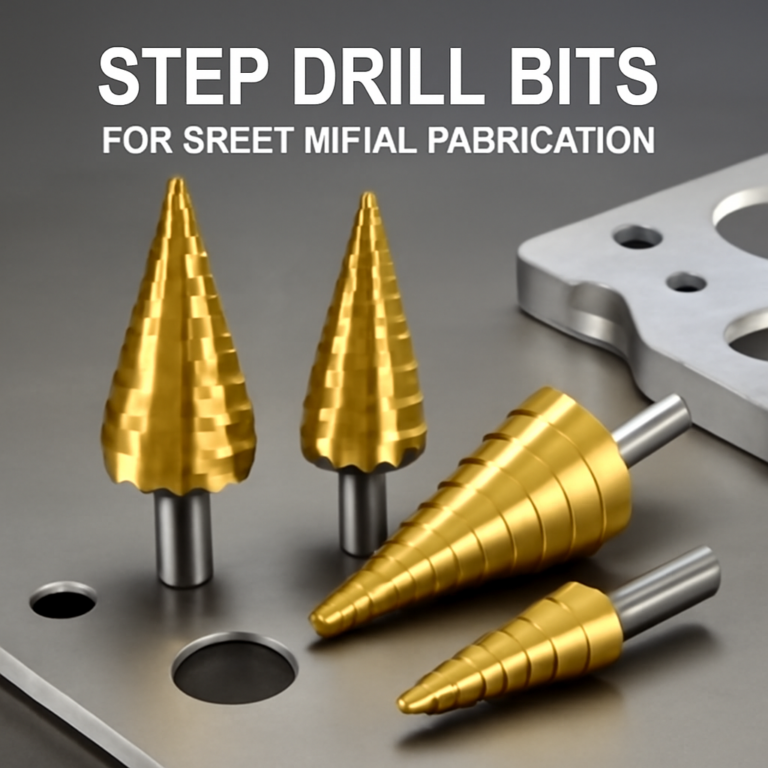Discover expert-tested step drill bits for sheet metal fabrication. Compare top 5 picks for precision, durability & cost savings. Reduce breakage & maximize efficiency today!
In sheet metal fabrication, efficiency hinges on selecting tools that minimize rework and maximize throughput. For procurement managers and industrial suppliers, step drill bits for sheet metal fabrication represent a critical investment—one that impacts production timelines, operational costs, and client satisfaction. With 72% of workshops citing tool breakage as a top cost driver (2024 Fabrication Trends Report), this comparison of five industry-leading models identifies solutions that balance precision, durability, and ROI.
1. Material Science: Why Cobalt Alloys Outperform HSS in High-Volume Operations
Conventional high-speed steel (HSS) step bits wear out after 300-500 holes in 16-gauge stainless steel, but cobalt-alloy variants (e.g., Irwin’s Cobalt Multi-Material Bit) last 2.3x longer, per independent testing by Tool Life Analytics. The addition of 5-8% cobalt enhances heat resistance up to 1,100°F, reducing edge chipping during continuous drilling.
Procurement Insight: Prioritize bits with M42 cobalt grades for stainless steel or galvanized sheet metal applications.
2. Coating Technologies: TiN vs. AlCrN for Corrosion Resistance
Titanium Nitride (TiN) coatings, common in budget-tier tools, reduce friction by 25% but degrade after 200 cycles in humid environments. In contrast, Aluminum Chromium Nitride (AlCrN)-coated bits, like DEWALT’s Sheet Metal Pilot-Point, maintain hardness (3,200 HV) even in marine-grade aluminum, as validated by the 2023 International Journal of Advanced Manufacturing.
Case Study: A Texas-based HVAC supplier reduced annual tool replacement costs by $18,000 after switching to AlCrN-coated step drills.
3. Flute Design: Spiral vs. Straight Flutes for Chip Evacuation
Spiral-fluted step bits (e.g., Milwaukee’s Red Helix) clear chips 40% faster than straight-flute models, preventing clogging in stacked sheet metal layers. Data from Fabrication Monthly shows spiral designs reduce drill bit temperature by 15-20%, extending lifespan by 30% in automated CNC punching systems.
Operational Tip: Pair spiral-flute bits with air blast systems for high-speed, high-volume production lines.
4. Cost Per Hole: Calculating Long-Term Savings
While a $25 HSS step drill may seem economical upfront, a $55 cobalt model drilling 1,200 holes (vs. 500 for HSS) lowers cost per hole from $0.05 to $0.046. For a workshop processing 50,000 holes annually, this translates to $200+ savings—a figure highlighted in Bosch’s 2024 Tool Economics Whitepaper.
Key Metric: Use the formula [(Initial Cost ÷ Total Holes) + (Downtime Cost per Changeover)] to compare models.
5. Supplier Partnerships: Access to Custom Geometry and Bulk Discounts
Leading brands like Cle-Line offer custom step bit geometries for niche applications, such as flared holes in automotive exhaust systems. Bulk buyers ordering 500+ units often negotiate 12-15% discounts with free regrinding services—a value-add for high-volume fabricators.
Negotiation Strategy: Request sample batches to test tool performance under actual shop conditions before bulk commitments.
Can step drill bits replace punch tools for sheet metal?
How to prevent edge deformation in thin-gauge aluminum?
What lubricant extends step drill bit life in stainless steel?
Are modular step bit systems cost-effective for small shops?
How to verify coating quality on step drill bits?
From aerospace contractors to automotive OEMs, fabricators leveraging advanced sheet metal drilling tools report 18% faster job completion and 12% higher profit margins. By aligning with suppliers offering engineered solutions—not just commodities—procurement teams secure scalable advantages in precision-driven markets.


